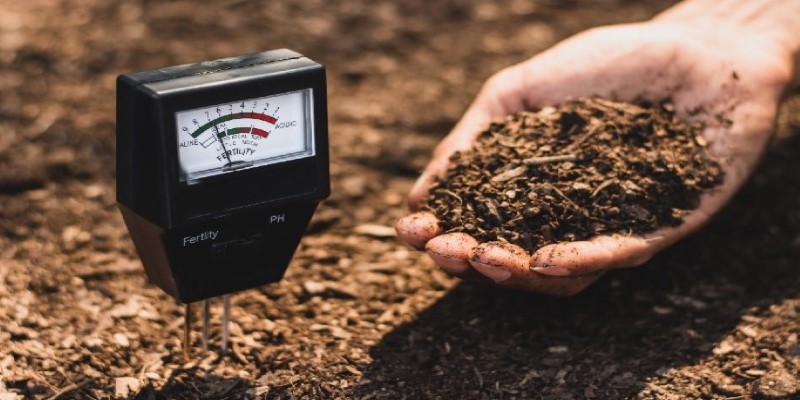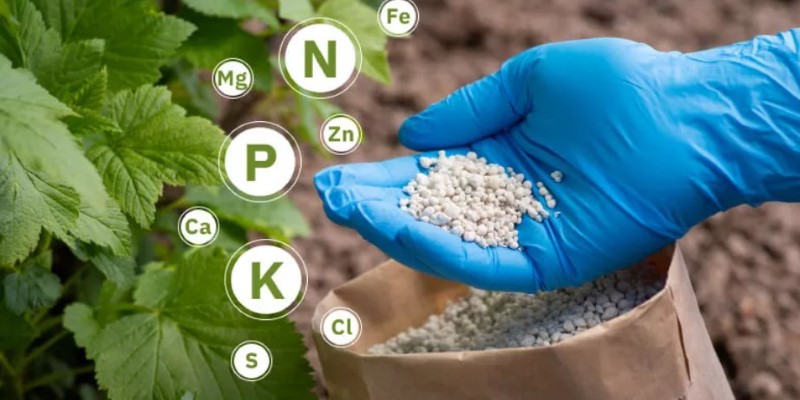Soil is the unsung hero of any garden or landscape. When its well-balanced and nutrient-rich, it supports vibrant growth, whether for flowers, vegetables, or a lush lawn. However, not all soils are equal. Some are too acidic or alkaline, some lack essential nutrients, while others have poor drainage or compaction. Testing your soil may seem like an extra step, but its one of the most effective ways to ensure youre giving your plants what they need.
Without it, you are basically gardening in the dark, guessing what might help your plants grow. This guide covers simple, at-home soil testing methods and, for those who want to know even more, a closer look at professional testing options.
Soil is so much more than just "dirt." It is an ecosystem composed of organic material, minerals, water, and air. Each of the components has an important role to play in the maintenance of plant growth and can be affected by being out of balance. Soil texture is either sand, clay, or loam; this hints at how well the soil holds water and nutrients, and loam, generally being a good mix between sand, silt, and clay, is, in most cases, more desirable for the growth of plants because it retains good amounts of water and nutrients.
Beyond texture, soil also contains nutrients such as nitrogen, phosphorus, and potassium, all critical elements for plant health. A balanced composition will ensure good root growth, healthy water absorption, and even higher resistance to pests and diseases. Testing can give you a snapshot of what's happening below the surface so you can make adjustments that benefit your plants in the long run.
A simple, quick assessment can be done at home for instant screening without a lab test. Though not as accurate as professional tests, such self-tests can reveal much related to soil pH and the basic requirements of the soil's nutrient availability.

This factor influences the availability of nutrients to plants. Most of them prefer a range of 6.0-7.0 pH levels. Testing the pH of your soil at home can be easily done by acquiring an affordable kit found at garden centers. Just mix a soil sample with distilled water, insert the pH test strip or probe into it, and read the results. The acid pH can be increased using lime, while the high alkaline level is decreased by using sulfur, letting you adjust based on what your plants need for balanced growth.
Home soil test kits help measure essential nutrients like nitrogen, phosphorus, and potassium, commonly referred to as N-P-K. These kits work by mixing a soil sample with a solution or test strip and comparing the resulting color changes to a chart. Though less precise than professional tests, they give a useful estimate of primary nutrient levels. Secondary nutrients, such as calcium and magnesium, may still require lab testing.
Soil texture affects how well it drains and holds nutrients, which is crucial for plant growth. To perform the jar test, fill a jar with soil, add water, and shake. Let it sit for a few hours to see sand settle at the bottom, silt in the middle, and clay on top.
Professional testing services are the gold standard for a more detailed soil analysis. These services are generally available through university extension programs, local agricultural departments, or private labs. Professional soil testing can provide precise measurements of nutrient levels, pH, and secondary minerals and specific recommendations for improving soil health.
Collecting a soil sample for professional testing is straightforward but does require some attention to detail. Heres how to prepare a sample:
Identify Sampling Spots: Choose areas in your garden where plants grow differently, such as one area where plants thrive and another where they struggle.
Dig a Sample: Use a clean trowel or shovel to collect samples from each area, digging about 6-8 inches down.
Mix the Soil: If taking samples from multiple spots, mix them to get a representative sample.
Dry the Sample: Spread the soil out on a clean surface to dry, removing any plant material or rocks.
After preparing your sample, send it to a local lab or agricultural extension, following their guidelines. Within a few weeks, youll receive a report detailing your soils composition, nutrient levels, and any amendments needed for optimal plant health.
Once you have a clear picture of your soils pH, nutrient levels, and texture, the next step is adjusting these factors to create the ideal environment for your plants.
If soil pH is too low, adding lime can help raise it to a more neutral level; for high pH (alkaline) soils, sulfur or ammonium sulfate lowers it. These adjustments take time, so it's best to re-test periodically to ensure steady improvement toward the desired pH balance.

Fertilizers boost nitrogen, phosphorus, and potassium. Organic options, like compost or manure, build nutrient-rich soil over time, while chemical fertilizers should be used carefully to avoid nutrient overload. Secondary nutrients like calcium, gypsum, or dolomitic lime can help but should be applied based on specific guidelines.
Clay-heavy soils can benefit from added organic matter, such as compost or peat moss, to improve drainage and aeration. For sandy soils that drain too fast, organic materials also help retain water and prevent nutrients from washing away, creating a more balanced environment for plant roots.
Testing your soil might not seem like the most exciting gardening task, but its among the most valuable. Healthy soil supports robust plant growth, reducing the need for extra fertilizers and strengthening plants against diseases and pests. By learning about and adjusting your soils pH, nutrients, and texture, youre setting up a garden that flourishes season after season. A small effort in testing brings lasting benefits, helping you garden effectively and reach the vibrant results youre hoping for.

By Noah Jones/Oct 21, 2024

By Eleanor/Apr 19, 2024

By Vicky Louisa/Apr 02, 2025

By Frederica/May 03, 2024

By Elva Flynn/May 13, 2025

By Eleanor/Mar 19, 2025

By Frederica/Dec 02, 2024

By Darnell Malan/May 13, 2025

By Susan Kelly/Apr 30, 2024

By Elva Flynn/Nov 12, 2024

By Celia Shatzman/Jun 03, 2025

By Lucy Lee/Feb 15, 2024